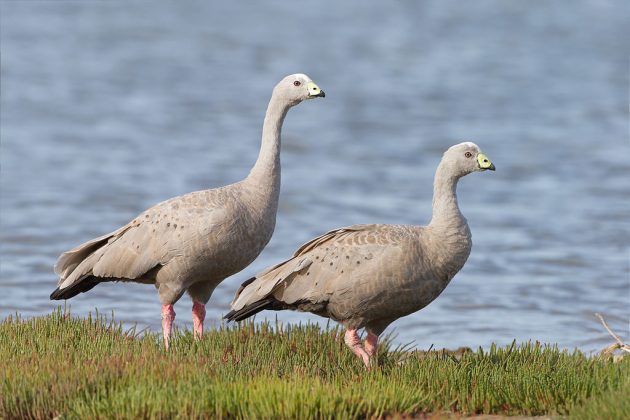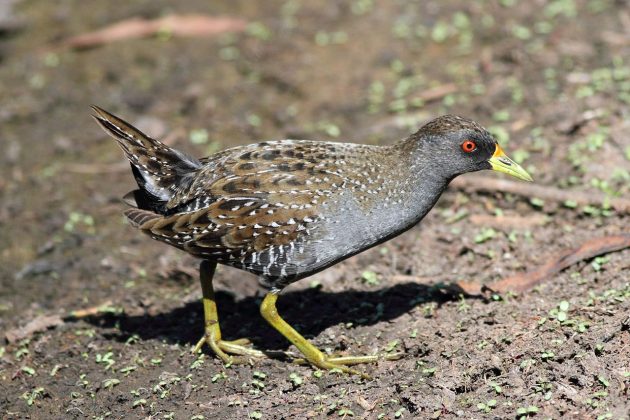I just got back from a flying visit to Melbourne, Australia’s second city and an exciting place to visit and live in. Most of the trip was taken up with family meals and nights on the town with friends (and suffering a bit in the morning), but I did get away to do some birding in Melbourne’s top birding spot which isn’t so much a dump as the pits. It’s a sewage treatment plant. Come to Melbourne for the food, stay for the s**t.
Our own Clare has written about the joys of birding Australia’s ‘poo ponds‘ and Melbourne’s, the Western Treatment Plant at Werribee, might be one of the finest. It’s also not spectacularly easy to visit as an independent birder, which I was happy to be able to link up with Steve Davidson at The Melbourne Birder. Not only would I have access to Werribee, but I’d have a guide that knew it like the back of his hand and would know all the hot spots, but also we were able to bird the whole time from his truck, which acted as a mobile hide.
Even before we reached the site Steve was pointing out raptors along the motorway, specifically Little Eagles and Black Kites. At the plant (the majority of which is no longer an active site an is instead managed for agriculture and nature) we turned off quickly to get one of my target species, driving past White-faced Herons, Eurasian Skylarks and Willy Wagtails. And there they were, Cape Barren Geese, an absolutely enormous species of goose that’s endemic to the southern coast of Australia. There’s an interesting theory that they are a relic of a time when large geese would have fed on the vast grassy plains of Antarctica, before that continent froze. They certainly look prehistoric.
 Cape Barren Geese by JJ Harrison (Creative Commons)
Cape Barren Geese by JJ Harrison (Creative Commons)
Also in the same pond were some Australian Shelducks and a very handsome pair of White-necked Herons, another lifer species for me. Like many Australian waterbirds these species are nomadic, unpredictable and I had not crossed paths with the herons before (and the shelducks only once before). They were not the first species of waterbird I had come across on this trip that met this description (more on them later), nor even the last I would see in that near instant, as behind us were a huge flock of Pink-eared Duck, a handsome shoveller-like species, as well as some Yellow-billed Spoonbills.
We tried another area looking for Brolga, a native crane that I’ve seen before but I always want to see again. We dipped on them, but did come across a pond with Banded Stilts and Red-headed Avocets, two Australian endemics, nomads and also recent lifers (I had found them a few days before at a distance nearby). Also in the ponds were Australasian Grebes and huge numbers of Hoary Grebes – in fact I have never seen such huge numbers of grebes anywhere in my life. Also around were some White-fronted Chats. These small birds look like wagtails that don’t wag, but are actually members of the honeyeater family. Terrestrial honeyeaters? No wonder they were in their own family for so long!
We stopped at a shallow pool by some reeds and waited, this was the spot for rails I was assured. Presently we had some nice birds like a Little Grassbird (one of Australia’s few Old World warblers) and a Black-fronted Dotterel. Then, one after another, a Spotless Crake and an Australian Crake. The latter was a lifer, the first a species I have seen twice in 10 years of birding Australia and New Zealand. All in all a pretty good handful (barely, they are very small) of birds.
Australian Crake by Frankzed (Creative Commons)
Still the birds came. We came across a number of Brown Falcons of various colour morphs, as well as a young White-bellied Sea Eagle. Whiskered Terns and White-winged Black Terns were both species I have seen many times before, but strangely it’s the first time I’ve seen them in Australia. Musk Ducks are another of those nomads I see rarely ( but what a treat they are) and the Blue-billed Duck was a nomadic lifer. Unfortunately the Freckled Duck, a regular species here that can be hard to get elsewhere, eluded us. But not for a lack of Steve trying to find one for me!
On the way out, as the sun set, Steve braked hard at the slightest song heard from the side of the road. Backtracking a bit, he found another star bird, a pair of Striated Fieldwrens, a really tricky bird to get up in Sydney. They look like small grasshopper warblers, are named after wrens and are actually members of the Australian thornbill family. We then set off to get one last bird, just outside the plant, in a pasture. Another lifer, and other nomad that has found the area perfect, a pair of Banded Lapwings.
Werribee with You Yangs Regional Park in distance
This is a great place. I can’t wait to go back out with Steve again next time in Melbourne, and you should give him a call if you’re in town too.












Pretty nice birding day! I wonder what other bird species might be relics of a warmer Antarctica?
What a great day!! My “go to” spot here in La Paz, Mexico is as well, the sewer treatment ponds….Just have to get out there before it gets too warm, as it gets a bit hard on the nose at that point!